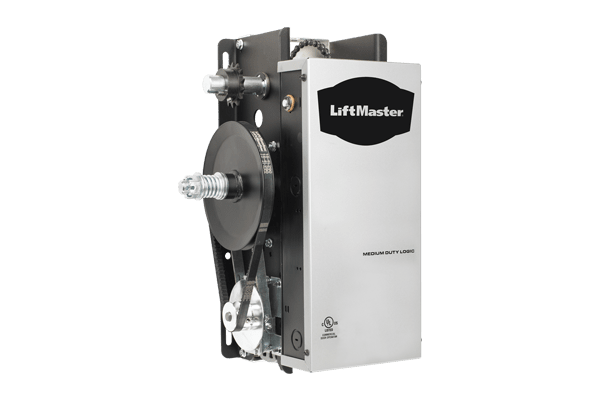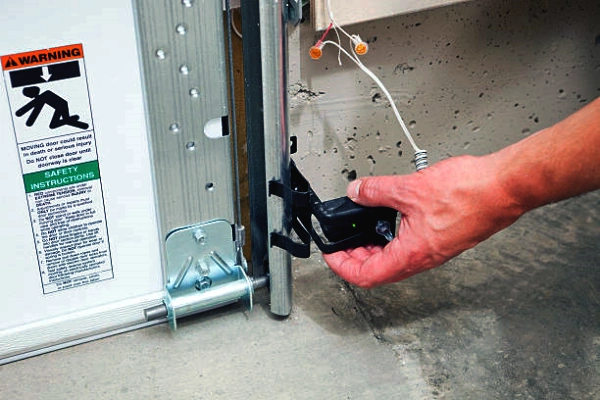Maintaining your garage door opener is the key to ensuring optimal performance. It might not be the most exhilarating chore, but it is necessary and not terribly difficult to accomplish. In this post, we’ll dive into the details of what it takes to ensure your garage door opener works safely, reliably, and smoothly. From routine preventive maintenance to honing in on more complex issues, this guide will provide you with all the information you need to keep your beloved garage door opener in peak operating condition. Let’s get started!
How to Troubleshoot Your Garage Door Opener
Maintaining peak performance requires regularly troubleshooting your garage door opener. Common issues with garage door openers can range from slow response time to complete failure of the motor. To troubleshoot a non-functioning or irregularly functioning garage door opener, it is necessary to check the power source, wiring, and moving parts.
If the door is not opening, the power source must be checked first. The internal fuse may need to be replaced, or a more serious problem could reside with the electrical circuit itself. If the power supply is confirmed to be working correctly, then the wires must be tested for breaks or disconnected connections. In some cases, unplugging the unit and plugging it back into its socket may remedy the issue.
Next, inspect any moving parts on the motor and attached components. Clean and lubricate any rusted parts, as this will increase efficiency and reduce friction that can stall component movement. Bastion boards that control movement should also be inspected for signs of wear and, if necessary, adjusted or replaced. Make sure any emergency release levers are in their proper positions as well.
Leading into the next section: It’s important to then check your sensors in order to identify any glaring issues that can cause further maintenance problems in the future when operating a garage door opener.
- An estimated 80% of garage door openers only need to be serviced once every five years.
- According to the International Door Association, regular lubrication and inspecting of the door, tracks, and safety sensors can help extend the life of your garage door opener by as much as three years.
- A 2012 survey found that 61% of homeowners in the United States who have garage door openers had them replaced within 5 years due to malfunction or breakdown.

Check the Sensors
Checking the sensors on your garage door opener is an important part of keeping it running well. The majority of openers are equipped with safety sensors, usually located at the bottom of each side of the door’s frame. These sensors detect when something (such as a person or pet) is in the path of the closing door and will automatically reverse the door back to its open position.
The sensors should be positioned about 6 inches from the ground and lined up directly across from each other to ensure proper performance. It is also crucial that they remain unobstructed and not covered by items stored in the garage. If blocked, these sensors will fail to sense any object in their path, leading to potential injury.
Dust and debris may also interfere with their functioning. Periodically cleaning them off with a dry cloth can help restore performance. In some cases, only minor adjustments are needed if the sensors appear misaligned. Some experts suggest using WD-40 on older sensor models to keep them properly lubricated and working optimally. However, others caution against it due to the risk of damaging the electrical components inside.
It is up to you to decide whether lubrication or a minor adjustment is recommended for your particular model. No matter what you do, make sure that both sets of sensors are properly aligned and free from obstruction for the best results.
Test the Remote
Testing the remote is essential for maintaining the optimal performance of your garage door opener. Your remote should be tested on a regular basis to ensure that it properly opens and closes the door. The first step in testing the remote is simply pressing the button on the remote to see if the door will move and close properly. If it does not, try swapping out the batteries with fresh ones.
If this does not solve the problem, you may need to check to see if there’s an obstruction blocking or interfering with the signal coming from your remote. This could be caused by something located close to your opener, like a power tool or radio, or even due to a poor connection between the antennae attached to your opener and the wall unit. Be sure to check all these things before proceeding any further.
Another thing to consider when testing your garage door opener is checking to make sure you are using a supported frequency range device. Usually, an older model opener uses different frequency ranges than more modern openers, which can cause issues with compatibility if they are not checked regularly.
Once you have verified that all parts are working correctly, begin by holding down the button on the transmitter for five seconds and then releasing it. You should hear a clicking sound from within the motor, followed by a light blinking twice from within the interior panel of your garage door opener. Once you’ve done this, press the same button again for another five seconds and wait for the two-blink response once again before releasing it. If this process produces no response from within your motor or a light blinking from inside it, it’s best to call upon a professional for help in determining what’s causing the issue and how best to resolve it.
Finally, be sure that you have programmed your remotes correctly so that they operate valves appropriately when engaged. To do this, hold down both buttons on either side of your remote simultaneously until you hear them click twice. Your remote should then be properly linked up and ready for use!
Regular Maintenance of Your Garage Door Opener
Regular maintenance on your garage door opener is an important step in keeping it functioning properly. On a regular basis, you should check the door opener for any signs of wear and tear or broken parts. This includes inspecting the chain and cables for any kinks, rust, or frayed strands; checking the chain drive/belt drive, which are the most common types of motors and should be inspected regularly for wear; and inspecting before, during, and after use to make sure the opener is functioning correctly. If you notice any issues with your opener, don’t hesitate to contact a professional garage door service company to take a look and advise you on the next steps to take.
In addition to these important checks, you also need to ensure that your garage door has been balanced properly. Unbalanced doors can cause problems with the motor, so it is best to weigh and balance it at least once each year. A majority of openers are equipped with monitoring systems that will alert you when something is out of balance. However, this does not replace taking the necessary steps to maintain balance in the system.
Finally, it is essential to keep an eye on the direction in which your opener is moving. Although it often begins opening in one direction, gradual wear can cause it to pull open in the opposite direction, which places greater stress on the opener. If this happens, you may need replacement parts or other repairs to help restore it to its original position.
Safety Tips for Your Garage Door Opener
Checking the sensors on your garage door opener is an important part of keeping it running well. Being aware of the potential hazards associated with your equipment and following a few basic steps can help you prevent an accident.
The main hazard associated with a garage door opener is its high force to lift or lower. Depending on the size and weight of your door, you may be able to operate the opener manually if needed, though this should be left as the last option. You should also ensure that any safety features, such as anti-break reversers, are programmed correctly so that the door will close safely if something is obstructing it while it is in motion.
It is important to remember that your garage door opener is not a toy and should remain out of reach of children at all times. Additionally, make sure that any cords are kept away from heat sources and mechanical components—this will help them last longer since heat and moving parts can damage them over time. As an added measure of caution, avoid using extension cords to power the opener, as these can easily become worn or frayed.
Finally, keep an eye out for any rusty or broken parts, as these can increase the risk of an accident occurring if they are not repaired or replaced promptly. Carefully inspect both the hardware and wiring annually to make sure everything is in good working order.
By taking these simple steps, you can help prevent any accidents due to a malfunction in the system, which could have been avoided with regular inspection and maintenance. In conclusion, a well-maintained garage door opener can save you time and money by providing smooth performance and a secure environment for your belongings.
Professional Help for Maintaining Garage Door Opener
Maintaining a garage door opener is essential to ensuring optimal performance and longevity of this important home device. Ultimately, whether it’s done by the homeowner or an experienced repairman, regular maintenance can help avoid costly repairs, reduce the risk of injury, and ensure greater productivity from the unit. Despite potential savings by going DIY, however, employing a professional for routine inspections should be considered in order to ensure maximum safety and efficiency.
If you need professional help ensuring the best performance of your garage door opener, you can contact Powell Garage Door. We are located at 1533 W 1220 N St., Lehi, UT, and also provide services in surrounding areas of Lehi.
By taking preventive steps to maintain the garage door opener regularly and seeking professional assistance when necessary, homeowners can rest assured that their units will be running properly. Doing so not only keeps them safe but also ensures that the device will provide years of reliable performance.


0 Comments